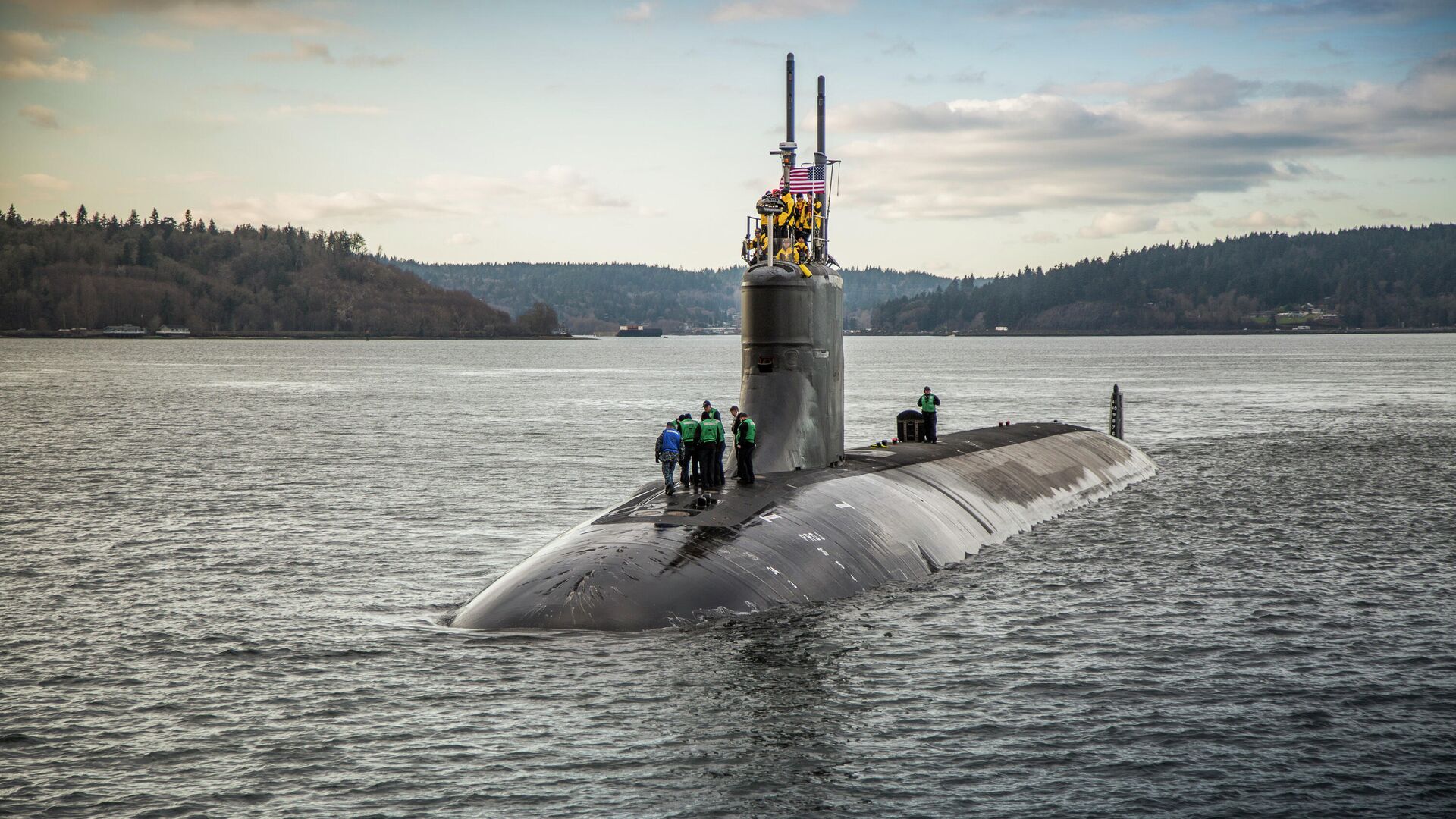US Sub Struck in Secretive South China Sea Deployment Suffered Damage to Ballast Tanks, Report Finds
10:36 GMT 29.10.2021 (Updated: 10:56 GMT 29.10.2021)

© Wikipedia / Thiep Nguyen
Subscribe
On 2 October, the USS Connecticut, a Seawolf-class nuclear powered fast attack submarine, struck an unidentified object in the South China Sea. 11 seamen received non-life-threatening injuries in the incident, and the sub was forced to limp back to the US naval base in Guam for assessment.
The USS Connecticut suffered damage to its forward portion and ballast tanks after bumping into an unidentified object in the South China Sea earlier this month, sources said to be familiar with the Navy’s initial damage assessment have told USNI News.
In submarines, ballast tanks are used to control vessels’ buoyancy. The tanks are flooded when a sub needs to submerge, and cleared of water using compressed air to make it buoyant again.
The outlet’s sources stressed that the sub’s onboard nuclear reactor and propulsion systems were not impaired in the incident. They did not comment on whether the sub’s torpedo tubes, which are situated in the forward portion of Seawolf-class boats, were affected.
Acting assistant secretary of the Navy for R&D and acquisition Jay Stefany has told lawmakers that repairs to the USS Connecticut will likely disrupt the existing ship repair schedule at the Navy’s four public shipyards – already said to be overwhelmed with a backlog of repair and retrofit orders.
“If we ended up doing [repairs] in one of the public shipyards, that would certainly cause perturbations in all the other work in the shipyards,” Stefany said, speaking before the House Armed Services Committee’s readiness subcommittee on Thursday.
“Right now, it’s in Guam, that’s public record, there is no dry dock in Guam, hopefully a sub tender can do the work, but that remains to be seen. It just shows how…the world gets a vote and things change and unexpected incidents create more demand for repairs…The attack subs have always been the poor cousin in the public shipyards in terms of getting priority,” the official complained.
Earlier this week, sources told USNI News that the Navy still wasn’t certain what the USS Connecticut ran into during its South China patrol, with no object “definitively determined”. Earlier this month, Politico reported that the sub may have hit a natural underwater feature. However, veteran Russian submariner, admiral and former commander of the Russian Baltic Fleet Vladimir Valuyev told Sputnik that the sub’s advanced onboard navigation systems should have virtually ruled out a collision with an underwater reef or rock formation.
Naval Sea Systems Command are said to be continuing the evaluation of the scope of the damage.
China has accused the United States of engaging in a cover-up. On Tuesday, Foreign Ministry spokesman Zhao Lijian stressed that Beijing has “repeatedly expressed grave concerns over the matter and asked the US side to make clarifications,” and accused the Pentagon of “nothing but a brief and vague statement issued…with procrastination, and a confirmation by a so-called informant that the incident did happen in the South China Sea”.
“Such an irresponsible, cagey practice gives regional countries and the international community every reason to question the truth of the incident and the intentions of the US,” Zhao said.
US officials initially only stated that the incident took place somewhere in the Asia-Pacific region. The Navy later clarified that the incident took place in the highly sensitive South China Sea, but only after a China-based think tank honed in on the approximate location where the sub bump took place. According to the South China Strategic Situation Probing Initiative’s assessment, the incident took place southeast of China’s Hainan Island and north of the Paracel/Xisha Islands in the Hainan-Paracel-Bashi Channel triangle. The think tank used satellite data, plus the location of other US warships in the area, to make its determination.
If this is. It's not hard to figure out the general area of the accident. Whether USS Connecticut was assigned to guard the USS Carl Vinson or to spy on PLA's SSBNs, there's a lot of potential in this triangle area of Hainan Island, the Paracel Islands and Bashi Channel. https://t.co/mxuyTl6u5P pic.twitter.com/bX1BZNDEZA
— SCS Probing Initiative (@SCS_PI) October 13, 2021
The Connecticut is a Seawolf-class sub –one of the most advanced, but also the most expensive, kinds of attack subs in the US Navy’s arsenal. Only three Seawolf-class subs were ever built, with an order for 26 more vessels cancelled in the 1990s after the end of the Cold War and a short-lived era of slashed Pentagon budgets. The sabre-quiet attack subs’ nuclear propulsion systems make their endurance virtually unlimited – apart from the need to ensure food and provisions resupply for crews. Their onboard weapons include Mark 48 torpedoes, Harpoon anti-ship missiles and land-attack cruise missiles.
China has laid claim to wide swathes of the South China Sea, and has repeatedly called on the United States to put a halt to its so-called ‘freedom of navigation’ naval patrols in the area.


